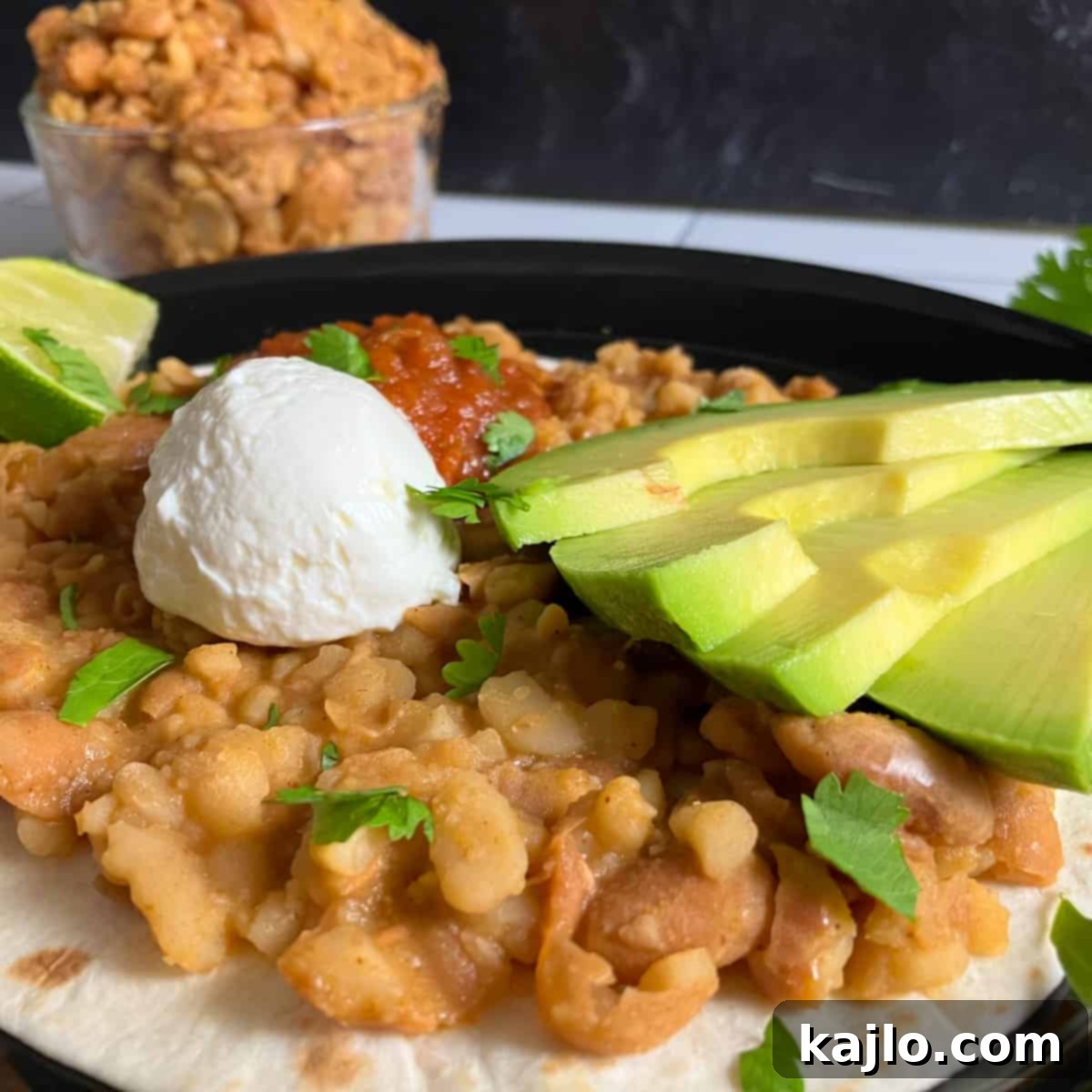Embark on a culinary journey to the heart of South America with Peruvian beans, a versatile and nutritious legume gaining popularity worldwide. Known by a variety of delightful names such as Peru beans, Peruano beans, and the vibrant canary beans, this high-fiber staple is a cornerstone of Peruvian cuisine. This comprehensive guide will equip you with everything you need to know about this incredible ingredient, from authentic Peruvian beans recipes and detailed nutrition information to where to find them and expert cooking tips. Whether you’re a seasoned chef or a home cook exploring new flavors, you’ll discover how effortlessly these smooth, creamy, and flavorful beans can be incorporated into a diverse range of dishes, including options perfectly suited for vegan and gluten-free diets. Get ready to elevate your cooking with these delicious and budget-friendly legumes!
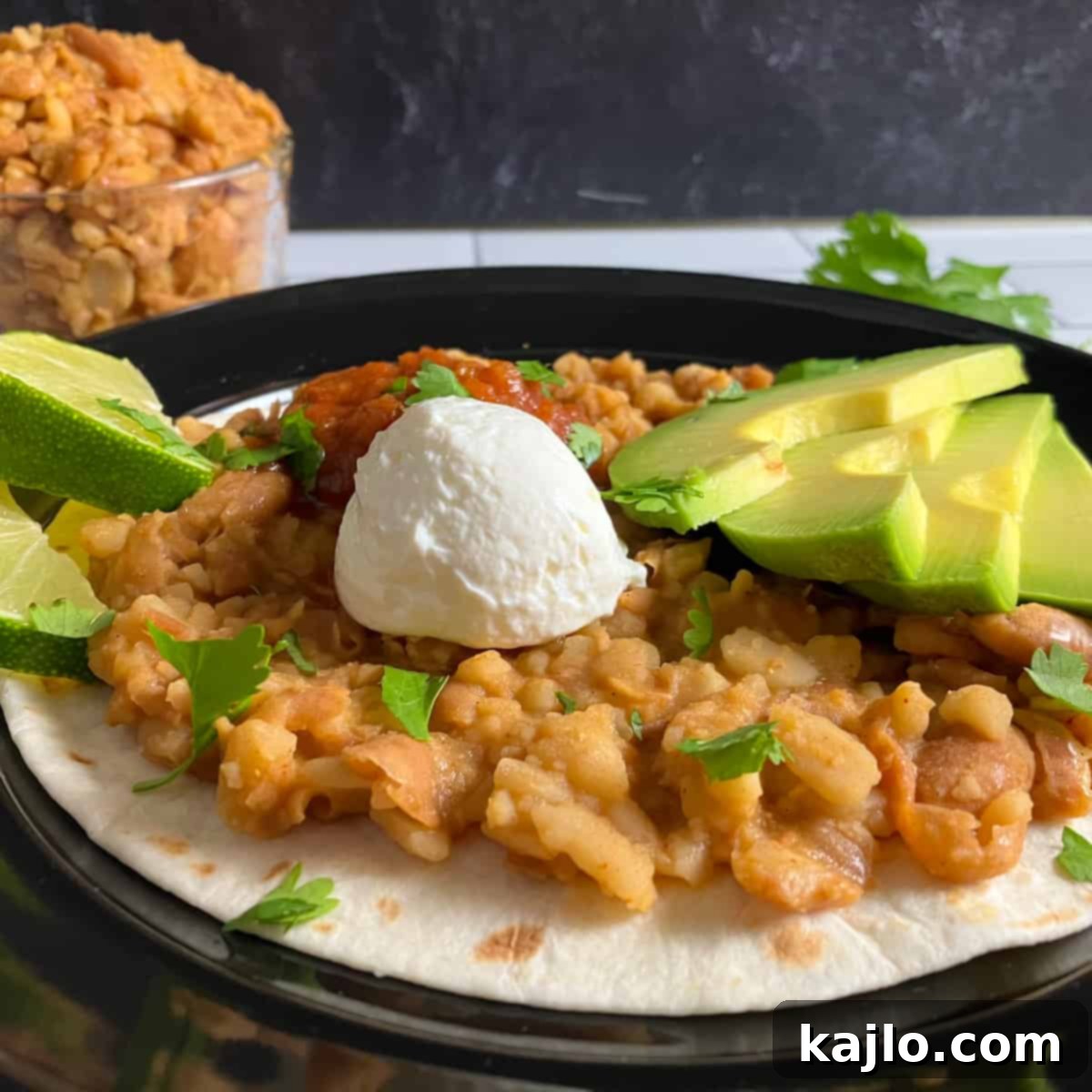
Unveiling the Many Names of Peruvian Beans
Peruvian beans are celebrated under a spectrum of names, reflecting their widespread use and regional variations. Understanding these aliases can help you locate them in stores and recognize their presence in diverse culinary traditions. Here are some of the most common names for Peruvian beans:
- Canary Beans: This popular name directly references their distinctive pale yellow color, reminiscent of a canary bird.
- Frijol Canario: The Spanish equivalent of “Canary Beans,” widely used in Hispanic communities.
- Peruano Beans: A straightforward name indicating their origin and popular usage in Peru.
- Peru Beans: A simpler, often interchangeable term for Peruvian beans.
- Mayocoba Beans: A specific variety of yellow bean, often synonymous with Peruvian or canary beans, particularly in North America.
- Maicoba Beans: A less common but occasionally used variation of Mayocoba.
- Mexican Yellow Beans: Another regional name, as these beans are also cultivated and enjoyed in Mexico.
Regardless of what you call them, these protein-packed, high-fiber legumes offer incredible value and a delicious addition to any meal, making them a pantry staple for many.
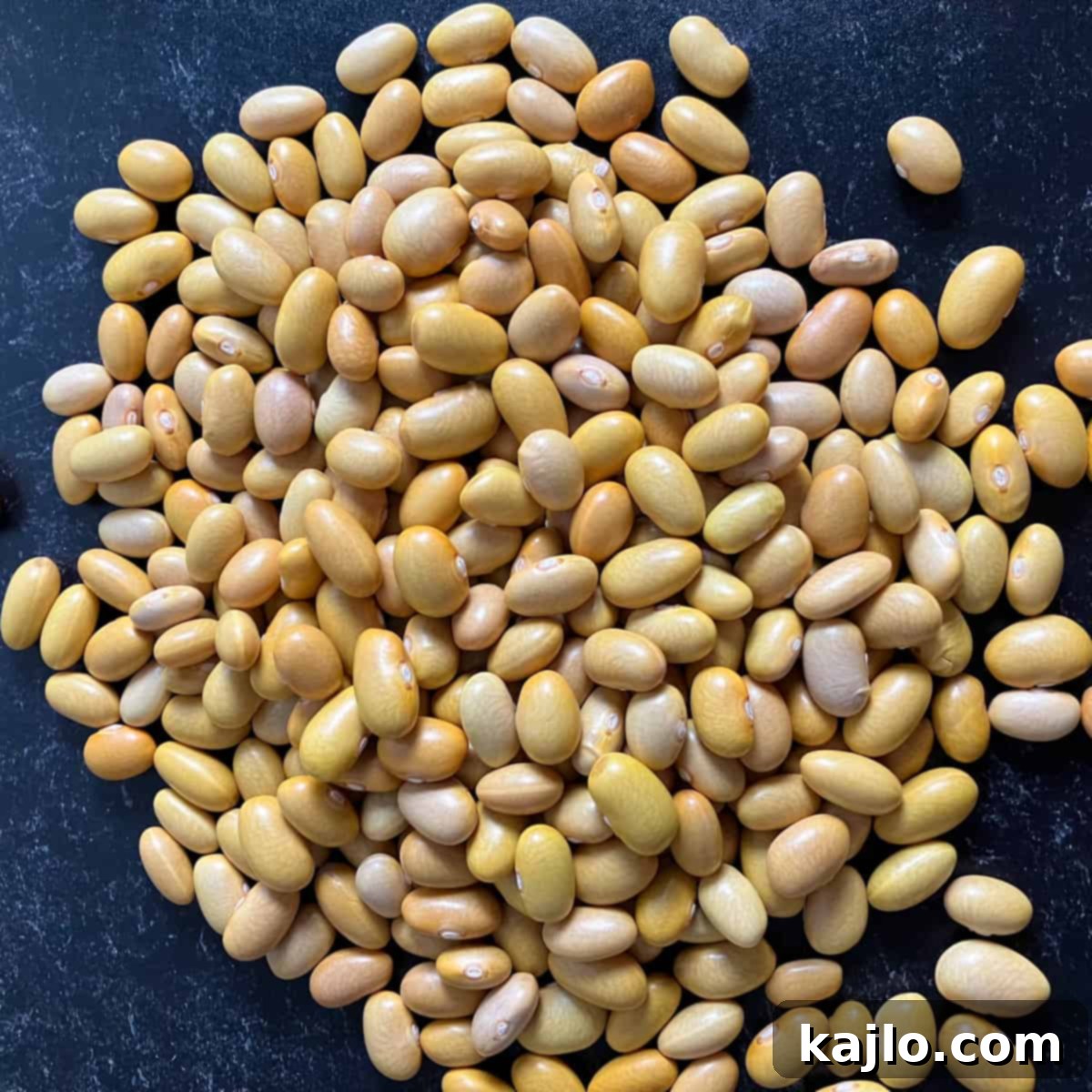
Peruvian Beans vs. Pinto Beans: A Culinary Comparison
Many people wonder about the distinction between Peruvian beans vs pinto beans, especially given their somewhat similar appearance after cooking. While both are excellent legumes, there are notable differences in their characteristics and culinary applications. Dried pinto beans typically exhibit a pink to reddish-brown hue with speckles, whereas dried Peruvian beans are a distinct pale yellow, ivory, or tan. This visual difference is a key identifier before cooking.
Beyond appearance, the true difference lies in their taste and texture. Peruvian beans are renowned for their remarkably mild flavor and exceptionally soft, creamy texture once cooked. They tend to break down easily, making them ideal for dishes where a smooth, buttery consistency is desired, such as refried beans or creamy bean soups. Pinto beans, on the other hand, possess a more robust, earthy flavor and maintain a slightly firmer texture, even after prolonged cooking. This makes them well-suited for dishes like chili or whole bean salads where a distinct bean presence is preferred.
Despite these differences, pinto beans can serve as a viable substitute for Peruvian beans in many recipes if canary beans are unavailable. Additionally, certain white beans, such as cannellini beans and great northern beans, offer a similar creamy texture and mild flavor profile, making them excellent alternatives. For those who don’t mind a color variation, black beans also provide a good source of protein and fiber, offering another flavorful option.

Mastering Peruvian Beans: Essential Recipes and Cooking Methods
Cooking Peruano beans opens up a world of culinary possibilities, and it’s far simpler than you might imagine. Their creamy texture and mild flavor make them incredibly versatile for a wide array of dishes. Below, we’ll explore several fantastic Peruvian bean recipes, ensuring you learn how to make Peruano beans perfectly every time. We’ll cover various cooking methods, from the efficiency of the Instant Pot to classic stovetop preparations, and transform them into beloved dishes like creamy refried beans and the iconic Peruvian tacu tacu, a savory beans and rice creation.
**General Tips for Cooking Dried Beans**
Before diving into specific recipes, remember these foundational tips for cooking any dried beans:
- Sorting and Rinsing: Always inspect dried beans for small stones, debris, or shriveled beans. Rinse them thoroughly under cold water using a colander.
- Soaking (Optional but Recommended): While some methods (like the Instant Pot) can skip soaking, an overnight soak (8-12 hours) can significantly reduce cooking time and may help with digestibility for some individuals by reducing oligosaccharides responsible for gas. If soaking, always discard the soaking water and rinse again before cooking.
- Seasoning: Cooking beans in broth instead of plain water imparts a richer flavor. Avoid adding salt too early in the cooking process if using the stovetop, as it can sometimes toughen the bean skins, though this is less of an issue with pressure cooking.
Effortless Instant Pot Peruvian Beans Recipe
The Instant Pot is a game-changer for preparing dried beans, drastically cutting down on cooking time without sacrificing flavor or texture. This Instant Pot Peruvian Beans Recipe delivers perfectly cooked, tender canary beans with minimal effort.
**Step-by-Step Directions for Instant Pot Peruvian Beans**
- Prepare the Beans: Begin by thoroughly rinsing one cup of dried Peruvian beans in a colander. Carefully pick through them to remove any small pebbles or debris that may have found their way into the package.
- Pressure Cook: Transfer the rinsed beans to your Instant Pot. Add 3 cups of chicken broth for enhanced flavor. For a vegan preparation, simply use vegetable broth. Secure the lid and set the Instant Pot to pressure cook on high pressure for 60 minutes. (Many Instant Pot models have a specific “beans/chili” setting which can be used).
- Release Pressure and Drain: Once the cooking cycle is complete, perform a quick release of the pressure according to your Instant Pot’s instructions. After the pressure has fully released and the float valve has dropped, carefully open the lid. Drain the cooked canary beans. They are now perfectly tender and ready to be used in your favorite recipes.
This recipe utilizes unsoaked beans, allowing you to skip the overnight soak and save precious time. While this means a slightly longer pressure cooking time, the convenience is often worth it.
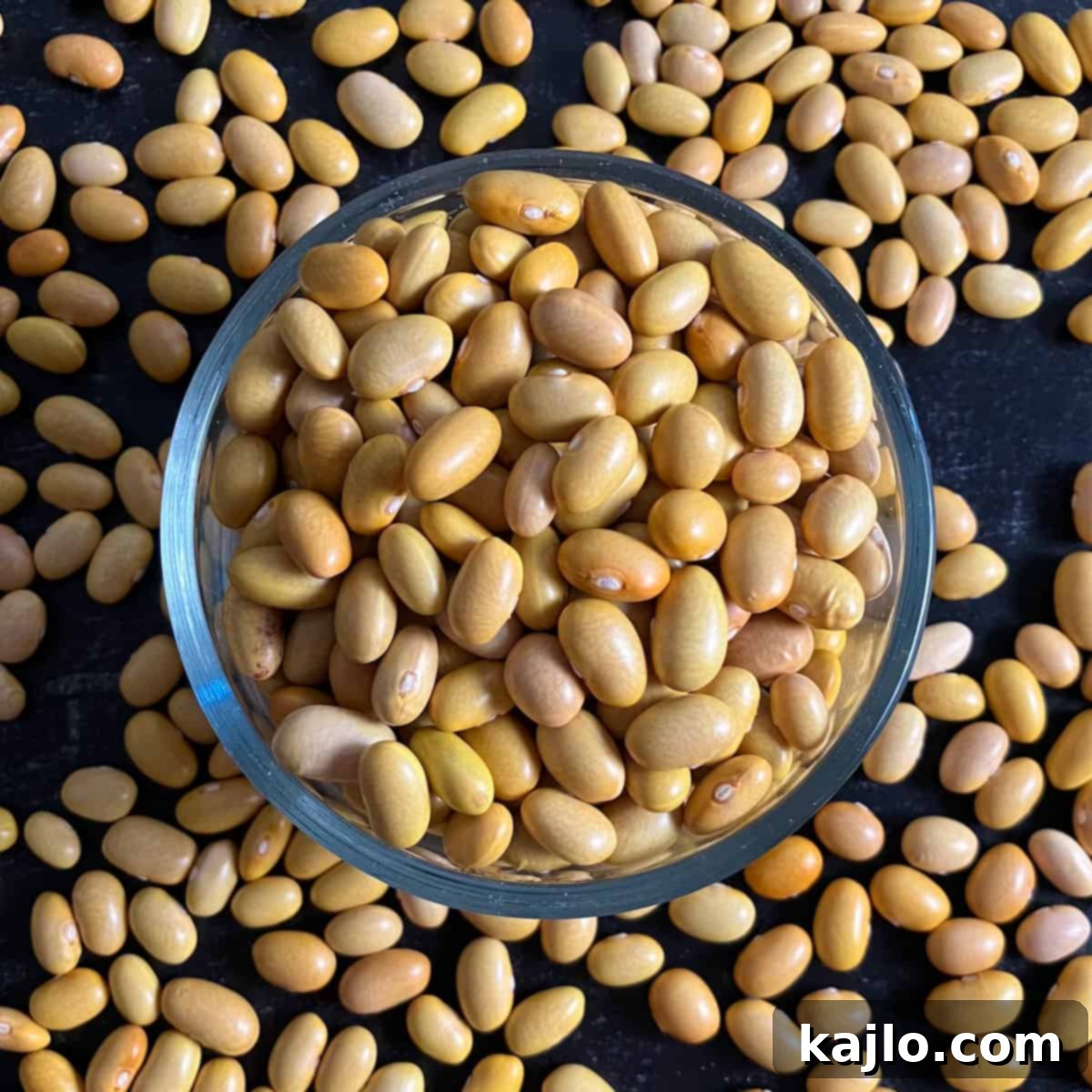
Digestive Comfort Tip: If you are prone to digestive discomfort such as gas or cramping after eating beans, consider soaking the beans first and discarding the soaking water before cooking. This process can help reduce some of the indigestible sugars (oligosaccharides) responsible for these symptoms.
Some Instant Pot recipes suggest shorter cooking times (30-40 minutes) for Peruvian beans. However, based on experience, a 60-minute pressure cook ensures the beans are wonderfully buttery and easily mashable – a texture that is particularly desirable for dishes like refried beans. Factors such as hard water or older beans can extend cooking times, so adjust as needed. For refried beans, achieving a slightly mushy consistency is preferable to firm beans, and the one-hour cooking time typically delivers this ideal result. Cooking your beans in broth significantly enhances their flavor, adding depth and seasoning that plain water simply cannot match.
Creamy Peruano Refried Beans Recipe
Once you have a batch of perfectly cooked Peruvian beans, transforming them into rich, creamy refried beans is a breeze. This Peruano Beans Recipe for refried beans is incredibly versatile and a staple for many Mexican and Tex-Mex inspired meals. You’ll need approximately 1¾ cups of cooked beans for this recipe, which can be either a drained 15-ounce can of canary beans or beans you’ve cooked from dry.
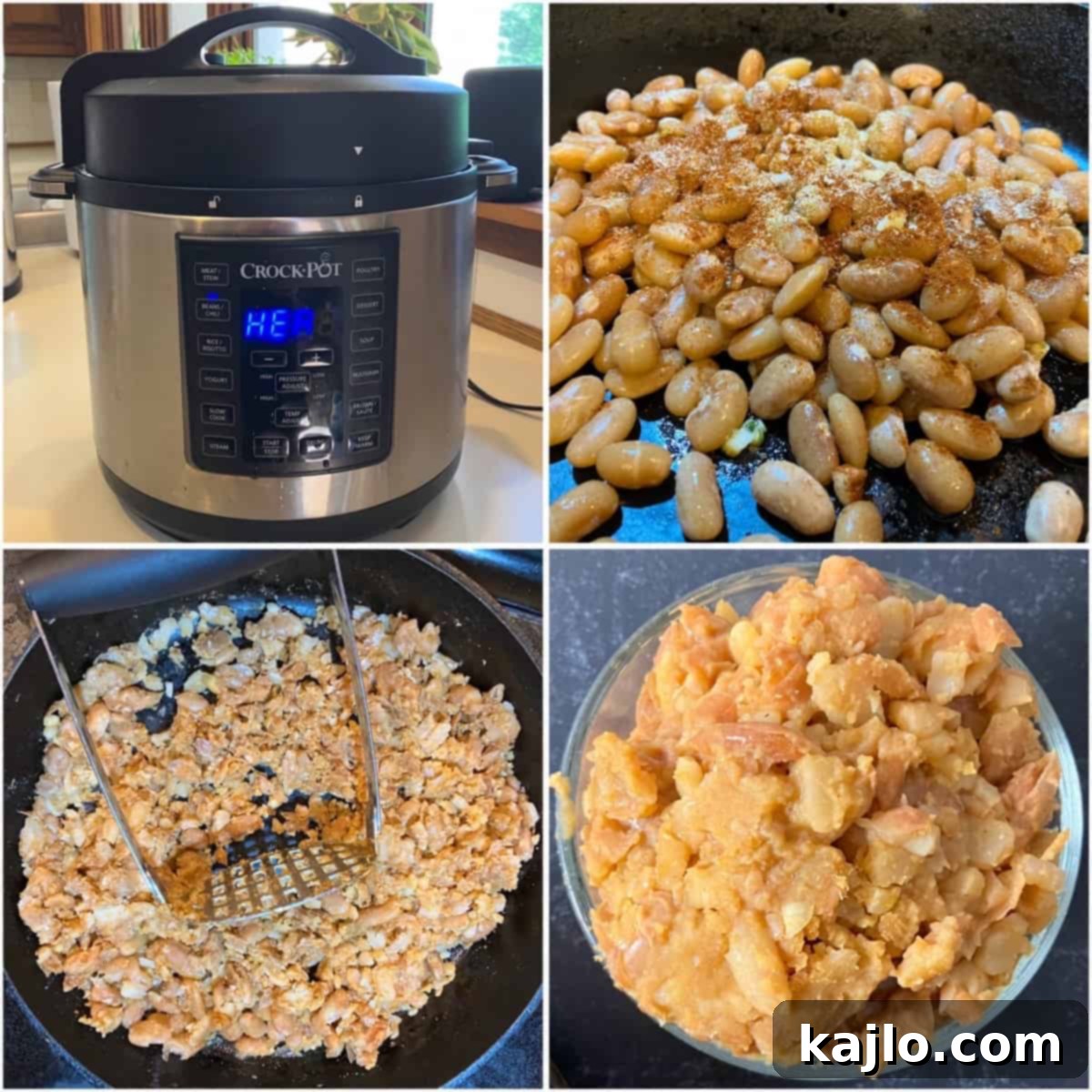
While this recipe provides simple instructions for a delicious refried bean dish, if you’re seeking a more authentic Peruvian experience, be sure to check out the Tacu Tacu recipe in the following section.
**Instructions for Easy Refried Peruvian Beans**
- Sauté Aromatics: Heat 1 tablespoon of olive oil (or traditional lard for richer flavor) in a cast-iron skillet over medium heat on your stovetop. Add 1 minced clove of garlic and cook for about 10 seconds until fragrant, being careful not to burn it.
- Combine and Mash: Add the cooked beans to the skillet, along with ½ teaspoon each of ground cumin, chili powder, and onion powder. Season with salt to taste. Using a potato masher, begin mashing the beans directly in the skillet. For a creamier texture, gradually thin the mixture with ¼ cup of broth (from cooking the beans, or fresh) and 1 teaspoon of fresh lime juice as you mash.
- Achieve Desired Consistency: Continue mashing until you reach your desired consistency – whether you prefer your refried beans chunky or super smooth. For a silky-smooth bean dip, you can transfer the mixture to a food processor and blend until creamy.
- Serve: These flavorful canary beans are an excellent addition to tacos, burritos, wraps, taquitos, and quesadillas.
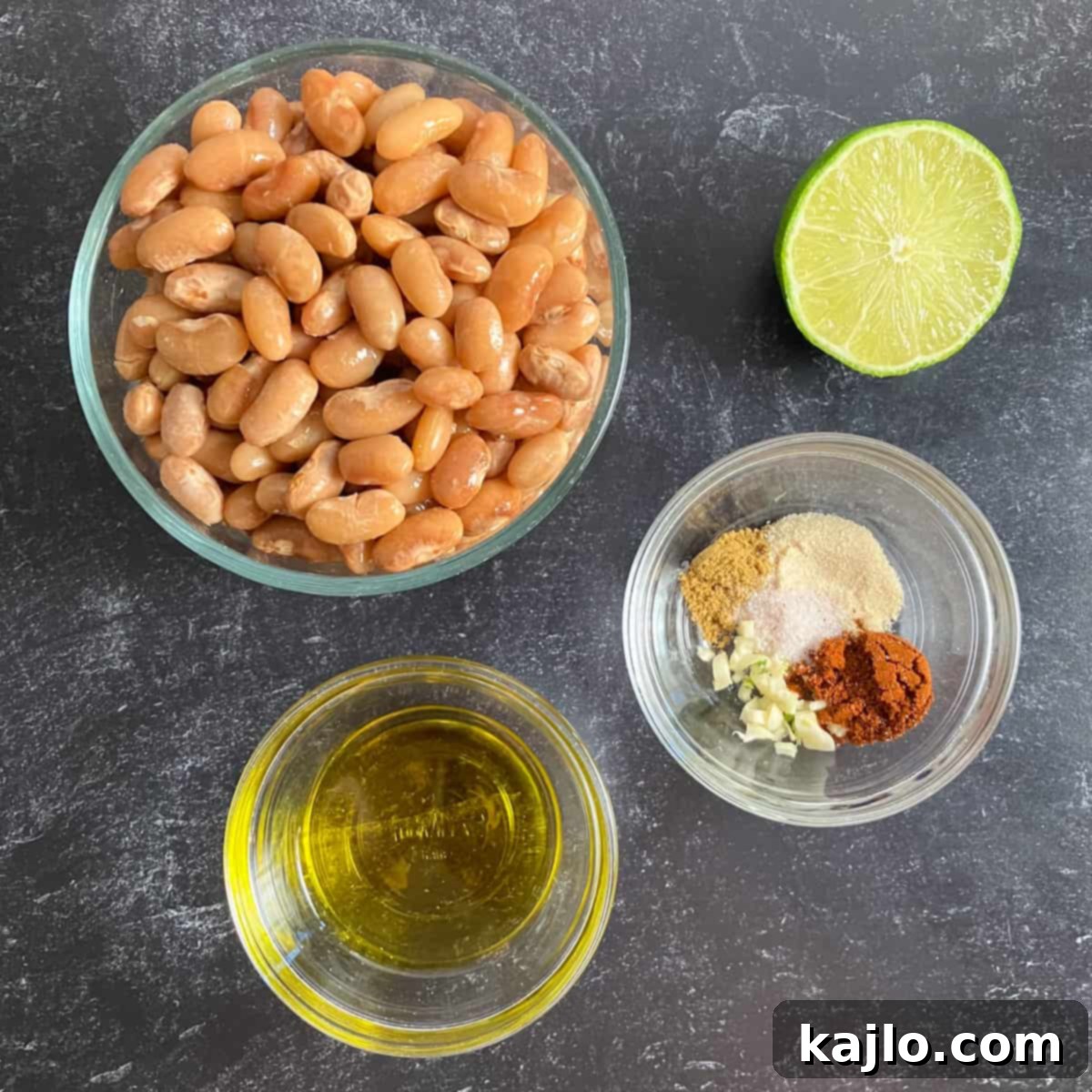
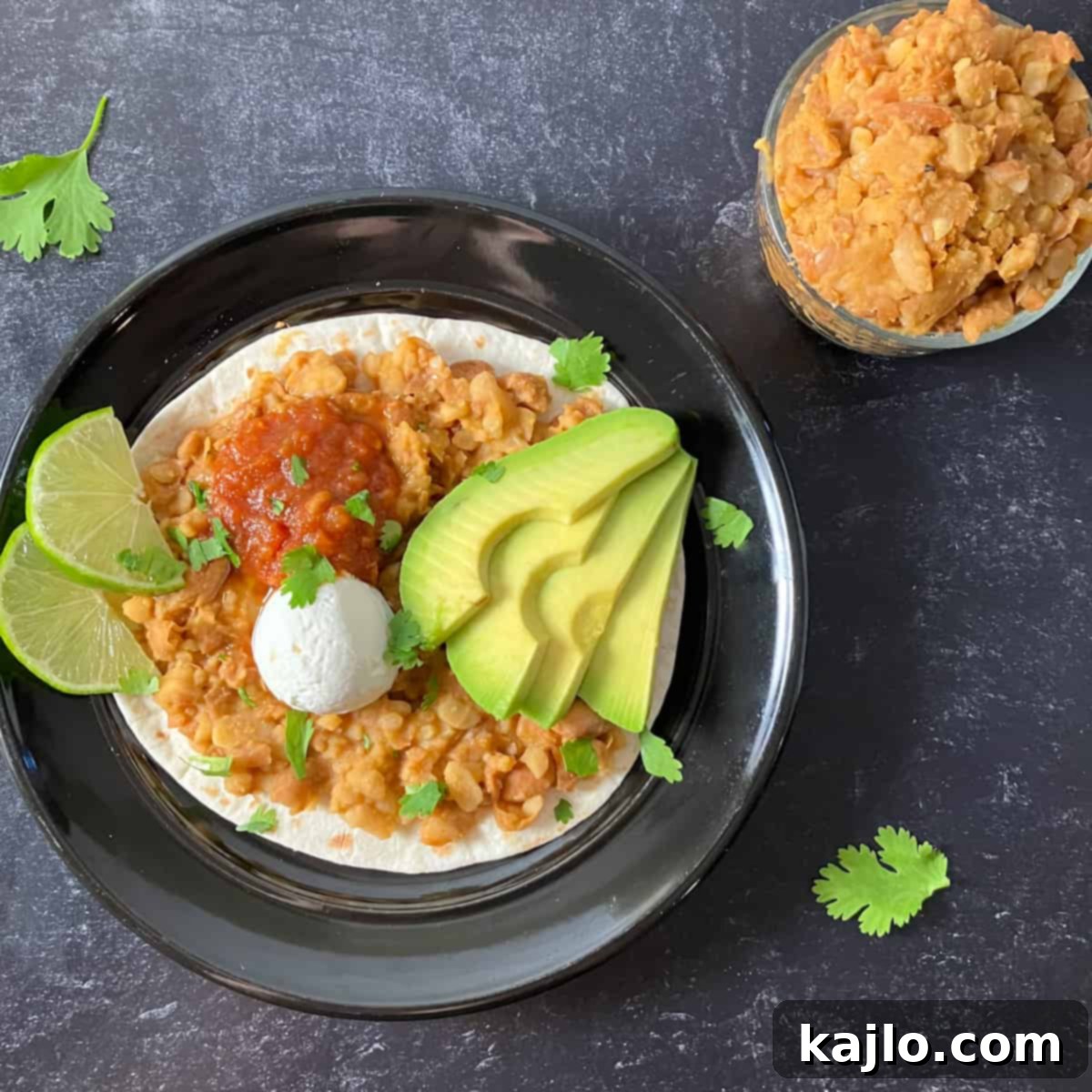
Authentic Peruvian Tacu Tacu: Beans and Rice Reinvented
Discover a true Peruvian classic with Tacu Tacu, a hearty and flavorful dish that masterfully combines leftover beans and rice into a crispy, satisfying meal. This recipe demonstrates how to make Peruvian beans on the stove as part of a traditional preparation. This particular recipe, courtesy of Peru Chef beans, is designed to serve 6 and offers an authentic taste of Peruvian home cooking.
**How to Prepare Peruvian Beans for Tacu Tacu**
- Initial Soak: Begin by soaking 3 cups of dry Peruvian beans overnight. This step is crucial for stovetop cooking, ensuring the beans soften properly and cook more evenly.
- Simmer and Tenderize: After soaking, drain the water thoroughly. Transfer the beans to a large pot and cover with unsalted water. Add 300g of diced pork fat or bacon (optional, but highly recommended for traditional flavor) and simmer until the beans are completely soft and tender. The cooking time can vary significantly based on the age of your beans and the hardness of your local water supply, so monitor closely.
**Crafting Peruvian Tacu Tacu**
- Mash the Beans: Once the beans are tender, drain them, reserving a small amount of cooking liquid if needed. Mash them into a coarse puree using a wooden spoon. Allow the mashed beans to cool slightly.
- Sauté the Sofrito: In a large pot or skillet, heat some oil. Add 2 finely chopped onions, 2 teaspoons of garlic paste, and 2 teaspoons of aji amarillo paste (yellow pepper paste), a staple in Peruvian cuisine that provides a vibrant color and mild, fruity heat. Cook until the onions are soft and translucent, and the paste is fragrant.
- Combine and Cook: Add the mashed beans and 2 cups of cooked rice to the skillet with the sofrito. Mix all ingredients thoroughly, ensuring the beans, rice, and aromatics are well combined. Continue to cook, stirring frequently, until the mixture achieves a golden-brown crust. Remove from the heat.
- Form the Tacu Tacu: With clean hands, take a portion of the warm beans and rice mixture and gently form it into a distinct tamale shape or a thick patty. Roll or coat this shape in bread crumbs or crushed crackers for an extra crispy exterior.
- Fry to Perfection: Heat oil in a separate skillet until hot. Carefully place the coated bean and rice mixture into the hot oil and fry, turning constantly, to achieve a golden-brown, crispy crust on all sides. Repeat this process for the remaining portions.
Tacu Tacu Peruano is not just a dish; it’s an ingenious way to transform simple leftovers into a gourmet experience, offering a delightful combination of textures and deep flavors.
Creative Ways to Serve Canary Beans
The mild flavor and creamy texture of canary beans make them incredibly versatile for a multitude of culinary creations. From hearty main courses to flavorful side dishes, these beans can elevate any meal. Here are some inspiring ideas on how to serve canary beans:
- Soups and Stews: Their creamy consistency is perfect for thickening and enriching broth-based soups and hearty stews. They absorb flavors beautifully, making them a comforting addition.
- Casseroles: Incorporate cooked canary beans into your favorite casserole recipes for added protein, fiber, and a wonderfully soft texture.
- Tacos and Wraps: Use them as a flavorful and satisfying vegan protein alternative in tacos, burritos, and wraps. Their mashable nature makes them an excellent base.
- With Meats: Canary beans pair exceptionally well with savory meats like spicy chorizo or salty ham, creating a robust and flavorful combination. Serve this over simple Peruvian rice or nutritious quinoa.
- Refried Bean Delights: As previously mentioned, refried Peruvian beans are fantastic on tortillas. Enhance your serving with fresh toppings like sliced avocado, zesty lime wedges, vibrant salsa, and a dollop of cooling sour cream. For extra flavor and texture, consider adding shredded cheese, thinly sliced jalapeños or serrano peppers, or a sprinkle of fresh cilantro.
- Traditional Tacu Tacu Accompaniments: Tacu tacu is traditionally served with an refreshing onion relish known as salsa criolla, which provides a zesty counterpoint to the rich beans and rice. Other popular accompaniments include sweet fried plantains and a perfectly fried egg. For a more substantial meal, it’s often served alongside grilled steak.
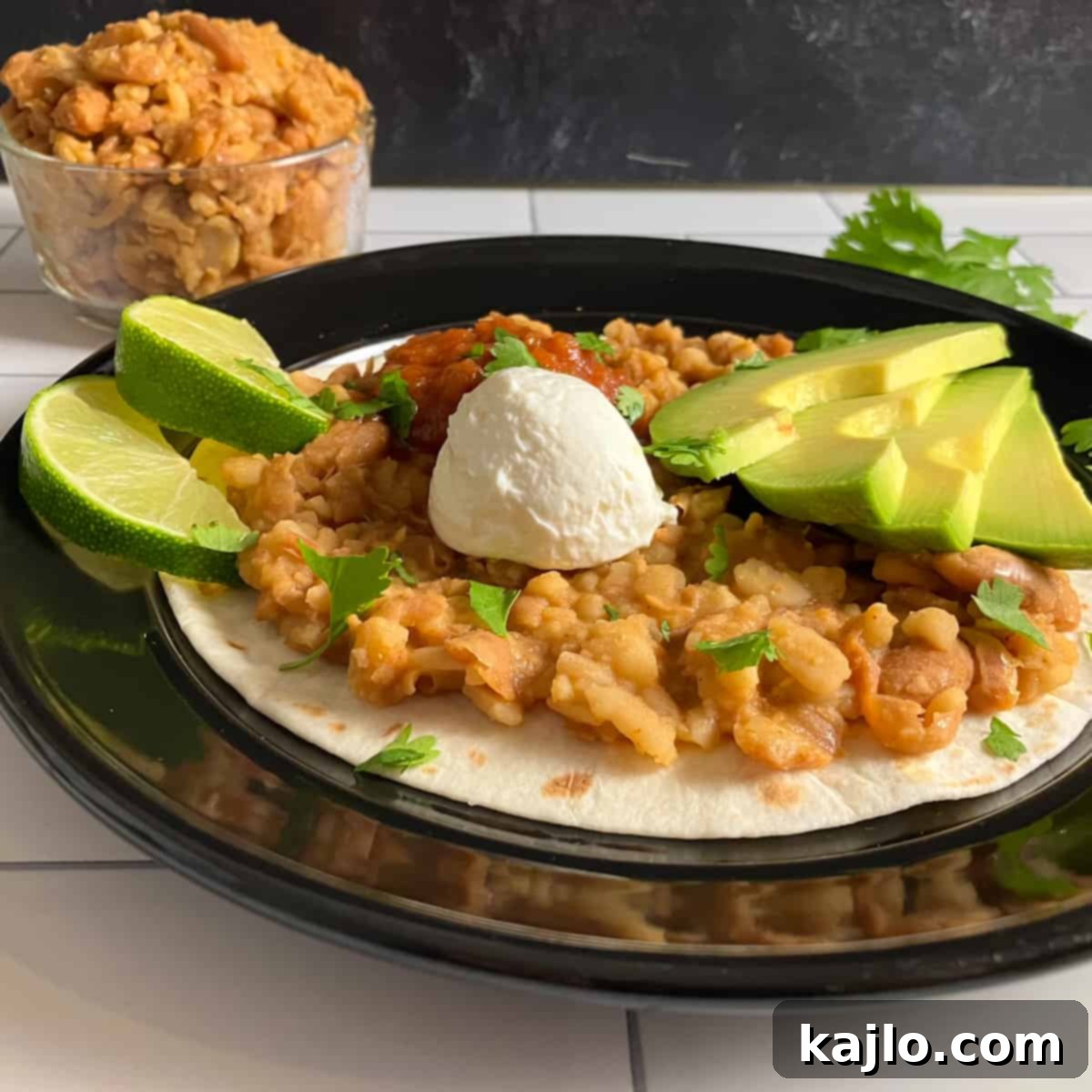
Storage and Shelf Life: How Long Do Peruvian Beans Last?
Proper storage is key to enjoying your Peruvian beans safely and for extended periods. Understanding their shelf life, both cooked and uncooked, helps in efficient meal planning and reduces food waste.
**Cooked Peruvian Beans**
Once cooked, Peruvian beans should be stored in an airtight container in the refrigerator. They typically remain fresh and safe to eat for up to 3-4 days. For longer storage, cooked beans freeze exceptionally well. Portion them into freezer-safe bags or airtight containers, ensuring there’s minimal air exposure. Many recipes incorporating Peruvian beans can also be frozen, providing convenient meal solutions for busy days. Properly frozen beans can last for several months (up to 3-6 months) without significant loss of quality.
**Uncooked Dried and Canned Peruvian Beans**
Unopened packages of dried canary beans or cans of Peruvian beans boast an impressively long shelf life, often lasting indefinitely in a cool, dry pantry, away from direct sunlight and moisture. While they may not spoil in the traditional sense, very old dried beans might take longer to cook and could have a slightly firmer texture. Nevertheless, they are an excellent non-perishable food item to keep stocked for emergencies or last-minute meal preparations.
Always check dried beans for any signs of mold, insect infestation, or extreme discoloration before cooking. For canned beans, ensure the can is not bulging, rusted, or leaking before use.
Peruvian Beans Nutrition and Health Benefits
Beyond their delicious taste, Peruvian beans offer a remarkable array of nutritional benefits, making them a smart choice for a healthy diet. Let’s delve into the specifics of Peruvian beans nutrition and the various Peruvian beans benefits.
According to Cronometer, for a ½ cup serving of cooked Goya canned Peruvian beans, you can expect the following nutritional profile:
- Calories: 120 kcal
- Carbohydrates: 20 grams
- Fiber: 10 grams
- Fat: 0.5 grams
- Saturated fat: 0 grams
- Cholesterol: 0 mg
- Protein: 8 grams
- Calcium: 4% Daily Value (DV)
- Iron: 10% DV
- Potassium: 8% DV
Peruvian beans are an outstanding source of dietary fiber, crucial for digestive health, blood sugar regulation, and promoting a feeling of fullness. They also provide a significant amount of lean plant-based protein, essential for muscle repair and growth. Furthermore, they are a good source of iron, a vital mineral for oxygen transport in the body, and potassium, important for blood pressure regulation.
It’s important to note that the iron found in Peruvian beans is non-heme iron, which is less readily absorbed by the body compared to heme iron from animal sources. To enhance non-heme iron absorption, pair Peruvian beans with foods rich in Vitamin C, such as fresh salsa, bell peppers, or a squeeze of lime juice. Naturally, Peruvian beans are a naturally vegan and gluten-free food, making them suitable for a wide range of dietary preferences and restrictions. While rich in complex carbohydrates, they are not a low-carb or keto-friendly food.
Understanding Peruvian Beans Calories
For those tracking caloric intake, Peruvian beans calories provide a clear picture of their energy contribution. A ½ cup serving of cooked Peruvian beans typically contains around 120 calories, with approximately 10 grams of net carbohydrates and 8 grams of protein. This makes them a nutrient-dense food that provides sustained energy and satiety due to their high fiber and protein content. The nutrition information for the specific refried Peruvian bean recipe provided can be found in the comprehensive recipe card below.

Frequently Asked Questions About Peruvian Beans
Here are answers to some common inquiries about Peruvian beans, providing further clarity and practical advice.
Where Can I Buy Peruvian Beans?
Finding Peruvian beans, whether dried or canned, is becoming increasingly easy. Many major U.S. grocery stores stock them, often under the Goya brand. You’ll also have great success at local Latino food markets, which typically carry a wider selection of ethnic ingredients. If you’re unable to locate them in your area, Peruvian beans are readily available for purchase online through retailers like Amazon here, offering a convenient option to have them delivered directly to your door.
Are Peruvian Beans Suitable for a Keto Diet?
Given their carbohydrate content, Peruvian beans are generally not considered suitable for strict ketogenic diets. They are a relatively high-carb food, providing a substantial amount of complex carbohydrates, which keto diets typically restrict. Individuals following a very low-carb approach would likely need to avoid or severely limit Peruvian bean consumption.
Are Peruvian Beans a Good Choice for Diabetics?
The suitability of Peruvian beans for individuals managing diabetes depends largely on their specific dietary approach and blood sugar control methods. For those using the diabetic exchange system, small, controlled portions of Peruvian beans can certainly fit into a balanced meal plan, providing fiber and protein that help manage blood sugar spikes. However, for individuals following very low-carb diets for diabetes management, Peruvian beans, due to their carbohydrate content, would not be an ideal choice. Always consult with a registered dietitian or your physician to determine the best dietary pattern for your individual health needs.
How to Cook Peruvian Beans in a Slow Cooker?
Cooking Peruvian beans in a slow cooker is an incredibly simple and hands-off method. To prepare slow cooker Peruvian beans, simply combine your desired amount of dried beans with sufficient water (usually a ratio of 1 part beans to 3-4 parts water or broth) in the slow cooker pot. Set it to the “low” setting in the morning, and by dinnertime, you’ll have wonderfully soft, creamy beans ready to incorporate into your favorite recipes. This method is excellent for busy days and ensures a consistently tender result.
Do Peruvian Beans Cause Gas or Bloating?
Like many fiber-rich legumes, Peruvian beans can indeed cause gas and bloating in some individuals, particularly if they are not accustomed to consuming high-fiber foods regularly. This is primarily due to the presence of oligosaccharides like raffinose, which are complex sugars that are not fully digested in the small intestine and ferment in the large intestine, producing gas. To help mitigate this discomfort, it’s advisable to gradually increase your intake of beans and fiber. Soaking dried beans overnight and then discarding the soaking water before cooking can also significantly help reduce the raffinose content, making the beans easier to digest.
Explore More Delicious Bean Recipes
If you’ve enjoyed cooking with Peruvian beans and are eager to discover other fantastic legume-based dishes, here are some more recipes to inspire your culinary adventures:
- Instant Pot Lima Beans (AKA Butter Beans): Experience the creamy texture of lima beans cooked quickly in your Instant Pot.
- Flavorful Black Bean Curry: A rich and aromatic curry featuring black beans, perfect for a plant-based meal.
- Crispy Roasted Garbanzo Beans (Air Fryer): A healthy and crunchy snack or salad topping made effortlessly in the air fryer.
Watch How to Make It!
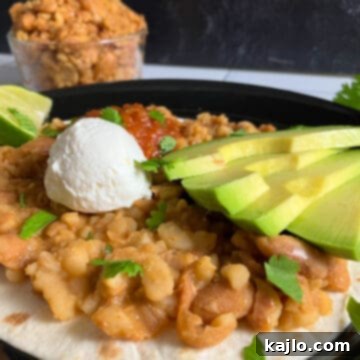
Peruvian Beans Recipe (AKA Canary, Peru, or Peruano Beans)
Summer Yule
Print Recipe
Pin Recipe
Ingredients
- 1 cup Peruvian beans (dry)
- 3¼ cups broth (chicken or vegetable, divided)
- 1 tablespoon olive oil (lard may also be used)
- 1 clove garlic, minced
- ½ teaspoon cumin
- ½ teaspoon chili powder
- ½ teaspoon onion powder
- salt, to taste
- 1 teaspoon lime juice
- tortillas, avocado, salsa, sour cream, lime wedges (optional, for serving)
Instructions
Cooking Peruvian Beans:
- Rinse dried beans in a colander. Pick through them and remove pebbles and small rocks.
- Place dried beans and 3 cups broth in the Instant Pot. Pressure cook on high pressure for 60 minutes. (I use the “beans/chili” setting.) Quick release the pressure.
- After the pressure is released, drain the canary beans. Now they are ready to use in recipes.
Peruvian Beans Recipe:
- Heat olive oil in a cast iron skillet. Add garlic and cook for about 10 seconds over medium heat on the stove top.
- Measure out 1¾ cups cooked beans, or use a drained 15 ounce can of beans.
- Add beans and cumin, chili powder, and onion powder. Add salt to taste. Smash the beans with a potato masher, thinning with ¼ cup broth and 1 teaspoon lime juice to give them a creamy texture.
- You can make the refried beans as chunky or smooth as you like. I like to leave the beans a little chunky. Serve with tortillas, avocado, salsa, sour cream, and lime wedges, if desired.
Save this RecipeSaved!
Equipment
- Colander
- Instant Pot
- Cast Iron Skillet
- Potato Masher
Notes
💭 Expert Tips from Dietitian Summer Yule
This is a level 3 recipe (weight maintenance and active lifestyles). Are Peruvian beans healthy? Peru beans are a lean protein that’s rich in fiber and a good source of iron. They are a healthy choice by most general nutrition standards.
The type of iron in Peruvian beans is non-heme iron. This is a type of iron that is less readily absorbed by the body than the heme iron in meat.
To help increase the amount of iron your body can use from this food, serve it with foods rich in vitamin C. Fresh salsa or fresh avocado are two options.
The reason I gave Peru beans the bump to level 3 is because of how they are usually served. I often see canary beans either fried in tacu tacu, or served on a white flour tortilla piled with high fat cheese, guacamole, etc. These are both high calorie ways to enjoy this lean bean.
The oils used in frying contain 120 calories per tablespoon. That’s as much as ½ cup of the beans! The oils absorbed during frying can really pack a lot of calories into your meal.
To create a weight loss friendly recipe with Peru beans, I’d serve them in a broth-based soup. Another option is to use them as vegetarian protein in a salad with low-calorie dressing. Both of these options can work well for volume eaters.
Beans can be a great choice as an alternative protein source for picky eaters who won’t accept meat. They tend to have a mild taste compared to beef and fish that some find more palatable.
Beans are also my top pick for whole food plant based protein. If you haven’t tried canary beans yet, I hope this recipe inspires you to do so.
Nutrition information is for one serving of refried beans without tortillas or toppings.
nutrition info disclaimer
All recipes on this website may or may not be appropriate for you, depending on your medical needs and personal preferences. Consult with a registered dietitian or your physician if you need help determining the dietary pattern that may be best for you.
The nutrition information is an estimate provided as a courtesy. It will differ depending on the specific brands and ingredients that you use. Calorie information on food labels may be inaccurate, so please don’t sweat the numbers too much.
“To taste” means to your preferences, which may have to be visual to follow food safety rules. Please don’t eat undercooked food x
Nutrition
Join our community! Subscribe for all of the latest and greatest recipes, and follow me on Facebook, Pinterest, Instagram, and YouTube!

